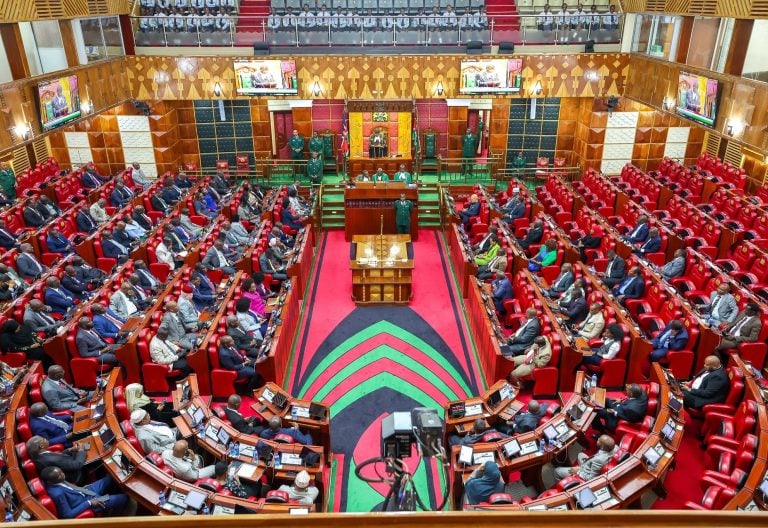Before oversharing your child on social media, pause…

If you spend time on social media sites such as Facebook, Twitter, Instagram, or TikTok, you’ve probably noticed how some parents share news, photos, and other information about their children.
Every day, we see online photos of children we’ve never met in real life. From celebrity accounts to private Facebook groups for friends and family, for many parents, it’s become a habit to document their children’s daily lives on social media.
Social media accounts are used to document every detail of a child’s life, often from the moment they are born. They capture every little thing and milestone and share it with everyone. And there is a name to this: “Sharenting,” a combination of the words “sharing” and “parenting.”
Security threat, embarrassment
However, though taking pictures of your child and sharing them with the people around you can be a way to keep records of their accomplishments and achievements, Evelyn Kasina, Family IT Consultant, a Digital Learning Leader, and the Founder of Eveminet Communication Solutions Limited says that sharenting is dangerous and has real-world consequences.
“Sharing private information causes a security threat. Other times it can be a source of embarrassment to the child,” she says.
In addition to taking and posting photos of children, parents also love to share the humorous — and occasionally frustrating — things that they say and do, which may lead to bullying and humiliation in future.
Kasina shares how no matter what privacy protections you have on your accounts, sharenting creates digital footprint for children. Sharenting, she says, ushers children into digital life, whether they want it or not. This decision can lead to long-term psychological and mental health burdens for children.
That content depending on its value can impact them positively or negatively in the future. Apart from that, parents who share information about their children online are also a cyber-security risk because they can easily be geo-located.
She reveals that many parents know sharenting may have negative implications on their children’s privacy, yet they go on to share information online.
Actually, according to a study by Barclays bank in 2018, sharenting is not only creating digital footprints for children, it is set to account for two-thirds of identity fraud facing young people by the end of the next decade. “Another decade of parents over-sharing personal information online will produce 7.4 million incidents per year of identity fraud by 2030,” said the bank.
Identity Theft Resource Center, a US non-profit organisation also warns that by combining information from social media, such as name, date of birth, and address, along with the troves of hacked personal data available to buy cheaply on the dark web, a scammer has all the details needed to open up a bank account or take out a loan in a child’s name.
Kasina observes how technology is an emerging threat to children because it can be used to create fakes such as images, videos, GIFs, sounds, or voices manipulated. She reveals that there have been cases of sextortion after children post private information about themselves or that of their peers, which ends up in blackmail, bullying, shaming, discrimination insecurity. The video or image can geo-locate the child, which may cause physical insecurity.
Safe navigation
“Ignorance is never an excuse, and it is not the absence of the law either. It is quite sad for a parent who is well aware of potential risks to proceed with sharenting just because they can, it is like knowing that fire burns and one goes ahead and touches a hot flame to find out how bad the fire burns,” she says.
Some children have also been kidnapped and their parents/guardians extorted, simply because kidnappers use posts that include identifiable data such as the name of a child’s school, location or residence and their interests. The worst is that since we live in a cancel culture world, our social media footprints can cause loss of opportunities, jobs, school placements among others.
What can one do to ensure that they sharent safely? Kasina says one needs to interrogate the reason why s/he want to share and the audience they are sharing with, question the impact of the content shared and finally, look at the privacy settings on social media account before commenting, resharing, and/or downloading, stitching, creating duos among others. “If and when these privacy conversations feel overwhelming or new, please take time to learn how to implement them so that your family’s online experiences are managed and memorable. Data is the new gold,” she says.
Also, ensure that the child/ren is aware and gives consent to the content if they are big enough to understand.
And why seek the consent of your child before posting their data online? She says that this is recommended because the parent must ensure that they do not create an unnecessary burden for their children to bear with cleaning up their digital footprint when they take responsibility for their content (which is near impossible.).
Apart from that, it is also a sign of courtesy to ensure that the children are part of the decision-making process that impacts them. Another reason is, as a country we have the Data Protection Act that requires us to be aware of the rights of others concerning their data and this includes children.
“It is also good to teach your child/ren to question any adult who would want to take videos or pictures of them on why, and what they intend to do with the content,” she says.











